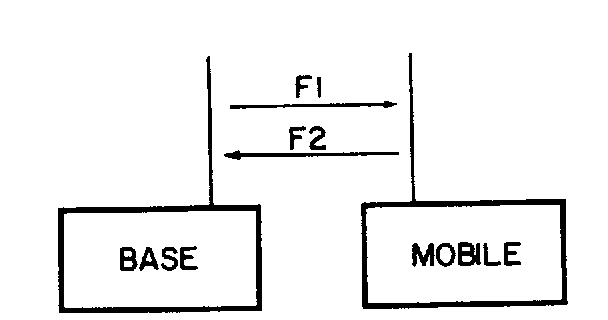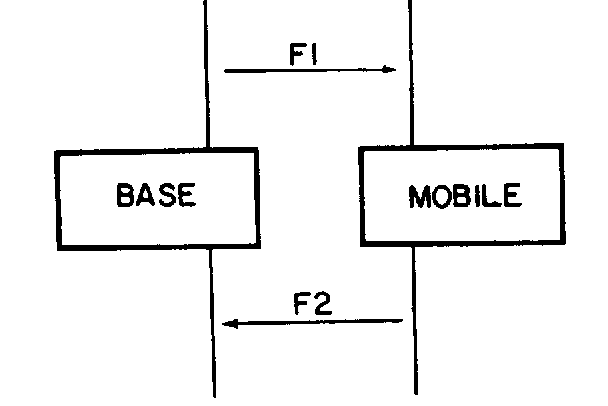
Kapitel 2. Radioteknik
11. Simplex innebär att samma frekvens används i bägge riktningarna (sändare - mottagare) och innebär att sändklaffen måste släppas vid mottagning. Duplex (full duplex) är att likna vid en telefonförbindelse, d v s man kan tala resp lyssna oavbrutet. Notera att marina VHF-apparater oftast är SEMI-DUPLEX apparater, d v s de kan användas för att "köra" duplex men apparaten beter sig som en simplexapparat, d v s sändklaffen måste även här släppas vid mottagning.
Utdrag ur Manual for use by the Maritime Mobile and Maritime Mobile-Satellite Services
RR1
Operational terms.
Semi-duplex operation
A method which is simplex operation at one end of the circuit and duplex operation at the other.
Note: In general , duplex operation and semi-duplex operation require two frequencies in radiocommunication, simplex operation may use either one or two.
Read more and see some pictures here.
FUNDAMENTAL SYSTEMS (Simplex and Duplex)
In the two-way radio services there are three major station classifications-mobile, base, and fixed. A mobile station is one associated with a moving vehicle such as a truck, automobile, boat, or aircraft. A base station, often referred to as a land station, has a fixed position and is used for communicating with one or more mobile stations (and on occasion, with other base or fixed dispatch stations). The great majority of two-way radio systems come under the base-mobile classifications and usually include a single base station and one or more associated mobile stations.
A fixed station is one in a permanent location used to communicate with other fixed stations. This form of two-way radio is usually referred to as point-to-point communications. Normally, in such services, there are no facilities for communicating with mobile stations. Their principal objective is to convey information between two or more fixed locations. This differs from the base station, which also has a permanent position but is used for communicating with mobile stations.
The most common arrangements of two-way radio stations are shown in fig 1 below.

Figure 1. Simplex
In the simplex arrangement, the base and mobile units operate on the same frequency, F1. A sequential "on-off" communication is established in which only one station can transmit at a given time, but can be heard by all other stations of the system. Each mobile station can hear both sides of a conversation between the base station and any mobile station. Likewise, communications can be established mobile-to-mobile when the stations are within range. Although not common, a simplex arrangement can also be used in a point-to-point radio system.
The duplex arrangement of figure 2 is the most common twoway radio arrangement. The base station transmits on one frequency (F1), while the mobile stations use a different frequency (F2). In this arrangement the base station can communicate with all mobile stations, but the mobile stations cannot communicate directly with each other. Information to be conveyed between mobile units must be transmitted through the base station. Each mobile station receives only the base-station signal.

Figure 2 Duplex. (Semi-duplex)
Although the duplex arrangement requires two transmitting frequencies (one for the base station and one for the mobile units), it is usually more satisfactory. It is possible to exert better control over the mobile units, and each mobile station is not confused by signals coming from other mobile stations (as with the simplex system)
The duplex arrangement also uses an "on and off" method of transmission. Quite often, frequency F1 is close to frequency F2. In .fact, it is customary at each station to use the same antenna for transmitting and receiving. A relay, operating in conjunction with the transmit-receive switching of the station, changes the antenna between transmitter and receiver. It is not uncommon for other segments of the station equipment to be used in both the "receive" and "transmit" positions.
A full duplex arrangement is shown in figure 3. Operating frequencies F1 and F2 are well-separated; consequently, each station can transmit and receive at the same time. Each transmitter output is isolated and separated in frequency in order not to block the input of its companion receiver. With this arrangement, there can be simultaneous communications between the two stations as in line telephone conversations. If more than one mobile station is included, it will usually be on a different transmit frequency. The base station can use the same or a different frequency to establish communications with other mobile stations.

Figure 3. Full duplex
Although the duplex arrangement requires two transmitting frequencies (one for the base station and one for the mobile units), it is usually more satisfactory. It is possible to exert better control over the mobile units, and each mobile station is not confused by signals coming from other mobile stations (as with the simplex system)
The duplex arrangement also uses an "on and off" method of transmission. Quite often, frequency F1 is close to frequency F2. In .fact, it is customary at each station to use the same antenna for transmitting and receiving. A relay, operating in conjunction with the transmit-receive switching of the station, changes the antenna between transmitter and receiver. It is not uncommon for other segments of the station equipment to be used in both the "receive" and "transmit" positions.
A full duplex arrangement is shown in figure 3. Operating frequencies F1 and F2 are well-separated; consequently, each station can transmit and receive at the same time. Each transmitter output is isolated and separated in frequency in order not to block the input of its companion receiver. With this arrangement, there can be simultaneous communications between the two stations as in line telephone conversations. If more than one mobile station is included, it will usually be on a different transmit frequency. The base station can use the same or a different frequency to establish communications with other mobile stations.

Figure 3. Full duplex